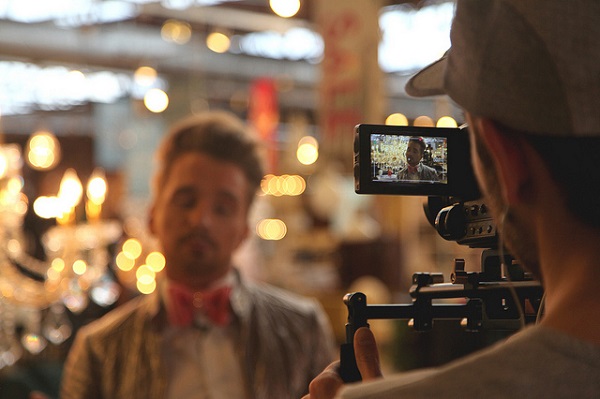
Even just a decade ago, live streaming used to be much more expensive and difficult, requiring a complicated set of equipment. Back in 2012 or so, achieving 1080p video resolution in a live stream broadcast is extremely expensive, and the low-impact results we’ll get back then simply didn’t justify the hassle.
Today, however, live streaming is not only easier to do, but the number of people who consume live streaming regularly has also significantly increased, believed to have grown by 99% from 2019 to late 2020.
While broadcasting live videos online is now much easier to do, you’ll still need to understand the different factors involved in setting up your live streaming equipment for a reliable, high-quality stream.
Don’t know where to start? You’ve come to the right place, and here we’ll discuss all you need to know about starting a live broadcast with the right live streaming equipment.
Basic Configuration of Live Streaming Equipment
While there are various different ways to set up a live stream, generally all live streaming processes can be broken down into four major parts:
- Capturing audio/video signals: capturing video signals from cameras and audio signals from microphones, as well as other sources.
- Production and editing: improving the presentation quality of the live feed, for example by adding overlays and using a mixer/switcher to switch between sources dynamically during the stream
- Live streaming: sending a continuous stream of video/audio signals to the viewers over the internet
- File management: storing and managing the recorded live stream files
Below, we will discuss each of them in more depth.
Capturing Video and Audio Signals
The basic signal flow in a live stream is to connect your audio and video sources to your encoder and computer (or in some cases, mobile computing devices like a tablet or even smartphone).
Video Source
In a live stream situation, a video camera is the most common type of video source, but a prerecorded video file on your computer can also be a video source in certain cases. You’ll need at least one video camera, but we’d recommend two for redundancies, especially if you are planning to broadcast a linear 24/7 stream.
As we know, video cameras now come in various types and price ranges, ranging from your smartphone camera to webcam to professional video cameras worth above $10,000.
Audio Source
Many research and studies have suggested that in a live stream, audio quality is more important than video quality, so don’t underestimate the importance of good audio sources.
Obviously, microphones (including our camera’s built-in microphone) are the most common audio sources in live streaming. There are various different types of microphones available in the market, from lavalier mics to modern USB microphones.
Encoder
You’ll need an encoder to convert (or encode) the video/audio signal into a stream-friendly data format. Most video sources (i.e. cameras) aren’t ready for live streaming, and an encoder is important to ensure a reliable, buffer-free stream. You can choose between a hardware encoder or a software encoder for this purpose.
A hardware encoder is a dedicated piece of hardware where the audio/video sources are connected directly to it. They are typically more expensive but are also more reliable with lower latency, and you won’t need a capture card to connect your cameras and microphones.
A software encoder, as the name suggests, is a program/software installed on your computer or mobile devices. They are more affordable, and in fact, there are free encoders like OBS that are pretty reliable. However, you will need a capture card to connect your video/audio source if you decide to use a software encoder.
Production and Editing
Depending on the purpose of your stream, you might not need to enhance it with additional production or editing elements, and you can consider this step a bonus.
If you use multiple audio/video sources, then you might need to invest in a mixer or switcher to switch between different sources during a live feed. However, your software encoder or live streaming platforms (more on this below) might also provide basic editing features like overlays.
Live Streaming Your Content and File Management
The next important step is to choose a platform to send your content, as well as a hosting solution to store your video files after a stream.
In general, we have three main options here:
- Building your own platform: you can technically build your own website, application, and video hosting/player platform from scratch. This option will provide the most versatility, but also the most time-consuming and expensive to execute.
- Free social platforms: you can build your TV channel on platforms like YouTube, Facebook Live, Twitch, and other social platforms. You can take advantage of their massive audience base, but you’ll be limited in terms of monetization and content distribution.
- Using a professional video platform: like Viloud that offers professional broadcasting TV software. You can perform simulcast on your website by embedding Viloud’s player, as well as forwarding your stream to other platforms of your choice.
With Viloud you’ll have your video files stored in an organized way so you can easily find any content whenever you need them. You can store your videos in Viloud’s cloud storage for convenience, or you can also host your videos on other platforms and embed the links to Viloud when needed.
Conclusion
Hopefully, by now you’ve picked up the basic principles of starting live streaming, and the essential live streaming equipment you’ll need to start your forest stream.
While live streaming is naturally a pretty broad topic and each live streaming setup is a unique case, by following the tips above along with some practice, you should be able to start a live broadcast for your video content right away.
via https://www.AiUpNow.com/ by admin, Khareem Sudlow
